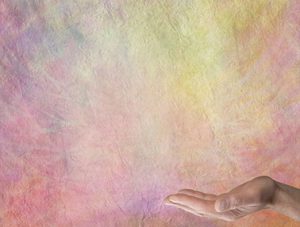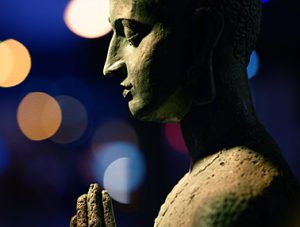 Throughout history, human beings have sought ways to restore themselves to health when health is lost. Different cultures and religions have developed a variety of approaches to therapy according to their ontologies, theologies and definitions of disease. On the one hand, for example, the Christian Scientist blames an unhealthy distance from God as a cause of disease, whereas Western medicine describes disease as an objectively measurable pathology of the body. Unsurprisingly, their therapeutic approaches to disease differ, with the former prescribing prayer, and the latter, medicine.
Throughout history, human beings have sought ways to restore themselves to health when health is lost. Different cultures and religions have developed a variety of approaches to therapy according to their ontologies, theologies and definitions of disease. On the one hand, for example, the Christian Scientist blames an unhealthy distance from God as a cause of disease, whereas Western medicine describes disease as an objectively measurable pathology of the body. Unsurprisingly, their therapeutic approaches to disease differ, with the former prescribing prayer, and the latter, medicine.
Modern yogis, informed by a deep tradition, are also developing their style of therapy. The International Association of Yoga Therapists defines yoga therapy as “the process of empowering individuals to progress toward improved health and well-being through the application of the philosophy and practice of Yoga” (www.IAYT.org). In this essay I would like to explore how this definition can be embellished through a study of Tantra Yoga.
The word therapy is derived from the Greek therapuein and pertains to curing and restoring both in a medical and spiritual sense (Fields, 2001, p. 5). Indian religious and spiritual schools embrace the concept of healing as a process of attaining one’s true nature. Hence, the Sanskrit terms for health, svastya and svasthata, mean self-abiding or coinciding with oneself. A similar idea is expressed in Patanjali’s Yoga Sutra 1.3: tada drastuh svarupe vasthanam – “when that [evenness of mind] is accomplished, the seer abides in its true nature” (Bryant, 2009, p.22 ).
In a spiritual sense, optimal health is a phenomenon that occurs within the multi-dimensional framework of the human being when, by uniting with the self, we “reach God” (Yung, 2009, p. 338). Ultimately, the path to health leads us to soul, a place that is pure, eternal and free from disease (Fields, 2001, p. 48). Tantra endorses this journey as the primary objective of the human being.
The origins of Tantra are uncertain, although there is general academic agreement in the West that Tantra is at least 1500 years old, with written evidence of Tantra dating back to the Gupta period (320 to 550 ce). However, some commentators such as Danilou (2003) and Sarkar claim that Tantra has its origins with Shiva as many as 7000 years ago. No matter where the historical truth lies, Tantra has wielded tremendous influence on the body of Indian philosophical thought and meditative practice. Tantra has flavored three religions with its teachings – Hinduism, Buddhism and Jainism – and, within the Hindu tradition, has spawned five distinctive paths – Sakta, Saiva, Saura, Ganapatya and Vaisnava – based on the predominance of particular deities.
 A major feature of Tantra is the understanding that all manifestation is the expression of the one Brahman and that one uses materiality in order to transcend materiality. Hence, for a Tantric practitioner, the body is seen as a sacred vessel for attaining the highest levels of human consciousness and ultimate liberation from this world of polarity. Eliade sums it up well by writing: “The body is no longer a source of pain, but the most reliable and effective instrument at man’s disposal for conquering death”(Eliade, 1990)
A major feature of Tantra is the understanding that all manifestation is the expression of the one Brahman and that one uses materiality in order to transcend materiality. Hence, for a Tantric practitioner, the body is seen as a sacred vessel for attaining the highest levels of human consciousness and ultimate liberation from this world of polarity. Eliade sums it up well by writing: “The body is no longer a source of pain, but the most reliable and effective instrument at man’s disposal for conquering death”(Eliade, 1990)
Being a pragmatic path, Tantra accepts the need for medical therapy to keep the temple of the body physiologically efficient while fully embracing the subtler aspects of the therapeutic approach. Tantric medical interventions are found in the Siddha tradition of southeastern India and in the Tibetan Buddhist traditions. What is significant about these traditions is not the content of their cures, but that their therapists are elevated souls. The India siddha (enlightened) medical practitioners transform themselves through ascetic practice and consumption of miraculous medicines to become semi-divine beings.
Under the patronage of King Trisong Detsen in 8th century Tibet, the ordained monk Yuthog Yontan Gonpo became an accomplished siddha, a revered healer and a pioneer in the tradition of the lama-doctor that continues to this day (Maresco, 2000). By the 17th century all the main monasteries in Tibet had a lama-doctor in residence who would combine the monastic spiritual discipline with his duties as a healer.
So Tantra provides a model of the therapist who embodies the ideals of health sought by a patient on all levels of human existence. For the siddha therapists, their model was Shiva, the one empowered to grant liberation from the limitations of suffering. Shiva is even revered as a healer in the Rv Veda: Cause our heroes to thrive with your remedies! I hear of you as the best physician of physicians. (Fields, 2001, p. 153).
Setting an example to patients to improve their response to healthcare has even been studied empirically in the West. The May 2013 edition of the Canadian Medical Association Journal cites a survey of 1,500 doctors that showed a positive relation between physicians’ and patients’ preventive health practices for tests such as blood-pressure and mammograms. (Frank, E. et al., 2013). East and West agree that therapists should model good health for their patients!
Perhaps Tantra’s greatest contribution to therapeutics is the recognition that spiritual illness is due to an ignorance of one’s true identity as an expression of Brahman. Tantra therefore prescribes subtle practices to heal the wounds of separation. Aesthetics is an important part of its therapeutic approach, since aesthetics creates a constant desire for that which is more subtle. Sarkar sums this up suitably by saying: “Aesthetic science will have to be based on mysticism. What is mysticism? Mysticism is the never-ending endeavor to find out a link between the finite and the Infinite” (Sarkar, 1979)
Tantra uses two techniques to evoke the healing charms of aesthetic beauty: imagery and mantra. Imagery is a meditative tool that can take the practitioner beyond limitations placed upon him or her by negative thinking, social conditioning or plain ignorance. Without imaginative vision the world is seen as unconscious and devoid of vitality, especially for the Saiva Siddhanta theology which describes the universe as being animated with Shiva’s enlightening gaze (Flood, 2006, p.173). Hence the practitioner, in opening the imaginative field through meditative practice, opens herself to the presence of the mystical consciousness, and begins to heal the wounds of separation.
 Healing imagery has various therapeutic applications in modern society. The hypnotherapy method of childbirth uses imagery to ease the pain and anxiety of the mother; cancer patients are taught imaginative methods to search and destroy cancer cells; and exposure therapy helps PTSD (Post Traumatic Stress Syndrome) patients visit past events safely within the imagination to gain peace and acceptance.
Healing imagery has various therapeutic applications in modern society. The hypnotherapy method of childbirth uses imagery to ease the pain and anxiety of the mother; cancer patients are taught imaginative methods to search and destroy cancer cells; and exposure therapy helps PTSD (Post Traumatic Stress Syndrome) patients visit past events safely within the imagination to gain peace and acceptance.
Sanskrit has undergone the natural changes that occur with any spoken language, yet still maintains strong principles that make it therapeutically pleasing. Sanskrit sounds are combined according to the rules of euphonic combination (Fields, 2001, p. 163). For example, the greeting Namah te, “Salutations to thee,” becomes Namaste; with the sounds being blended to capture a sweet resonant flow. Hence, the oral recitation of Sanskrit chants can engender positive vibrational results.
Sanskrit mantras are potent, and represent the mystical forces of consciousness lying hidden behind the veil of reality. These mantras are not cognitive phenomena, but are powerfully resonant sounds that vibrate body and mind, to entrain the individual’s vibration with that of the cosmos itself. Hence, they are equipped with the power to unite that which was fragmented, to make whole that which was undone. For example, the mantra aham represents the human journey from the emergence of life (represented by the letter a) to the dissolution in pure consciousness (represented by m, the point to which all creation returns). When uttered on the exhalation, the internal recitation of ham can give the practitioner an inexpressible feeling of lightness and freedom, essential qualities of health.
The study of Tantra permits us to examine the IAYT definition of yoga therapy from a deep perspective. Tantra provides the philosophical understanding that a loss of health is a fragmentation of the original state of being, and offers practices to re-establish the link with Brahma and find wholeness. Perhaps the therapeutic approach of Tantra is best encapsulated by one of Tantra’s definitions of Yoga: Saḿyoga yoga ityuktah jiivátmá paramátmanah – Yoga is the endeavor of the individual (jiiva) to merge in the Great (paramatma) (Sarkar, 1965).
———————-
References:
Bryant, E.F. (Eds.). (2009). The Yoga sutras of Patanjali. New York: North Point Press
Danilou, Alain. (2003). A brief history of India. Vermont: Inner Traditions.
Eliaide, M. (1990). Yoga: Immortality and freedom. Princeton: Princeton University Press
Fields, G.P. (2001). Religious therapeutics: body and health in Yoga, Ayurveda and Tantra. Albany: State University of New York Press.
Flood, G. (2006). The Tantric body: the secret tradition of Hindu religion. New York: I.B. Tauris. P. 173
Frank, E., Dresner,Y., Shani, M., Vinker, S. (2013). The association between physicians’ and patients’ preventive health practices. Canadian Medical Association Journal.185:8.
Maresco, S. (2000, May-June) Practicing the art of Tibetan Buddhist healing. Mandala.
Sarkar, P.R. (1965) Subháśita saḿgraha, Part 18. Calcutta: Ananda Marga Publications (downloaded version).
Sarkar, P.R. (1979). Ananda vacanamrtam, Part 14. Calcutta: Ananda Marga Publications (downloaded version).
Yung, K. (2009). The red book. New York City: Norton & Co

